Various DIY Acopian BirdSavers
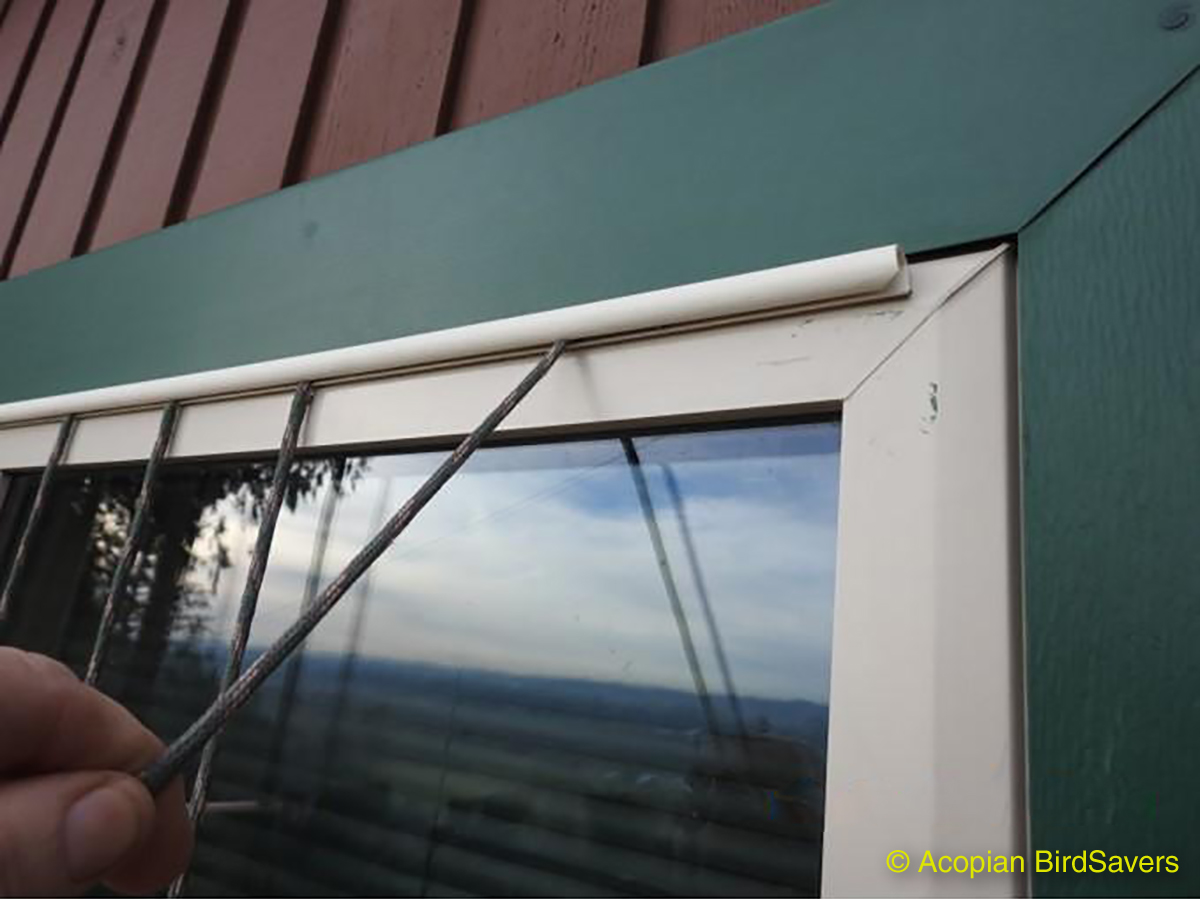
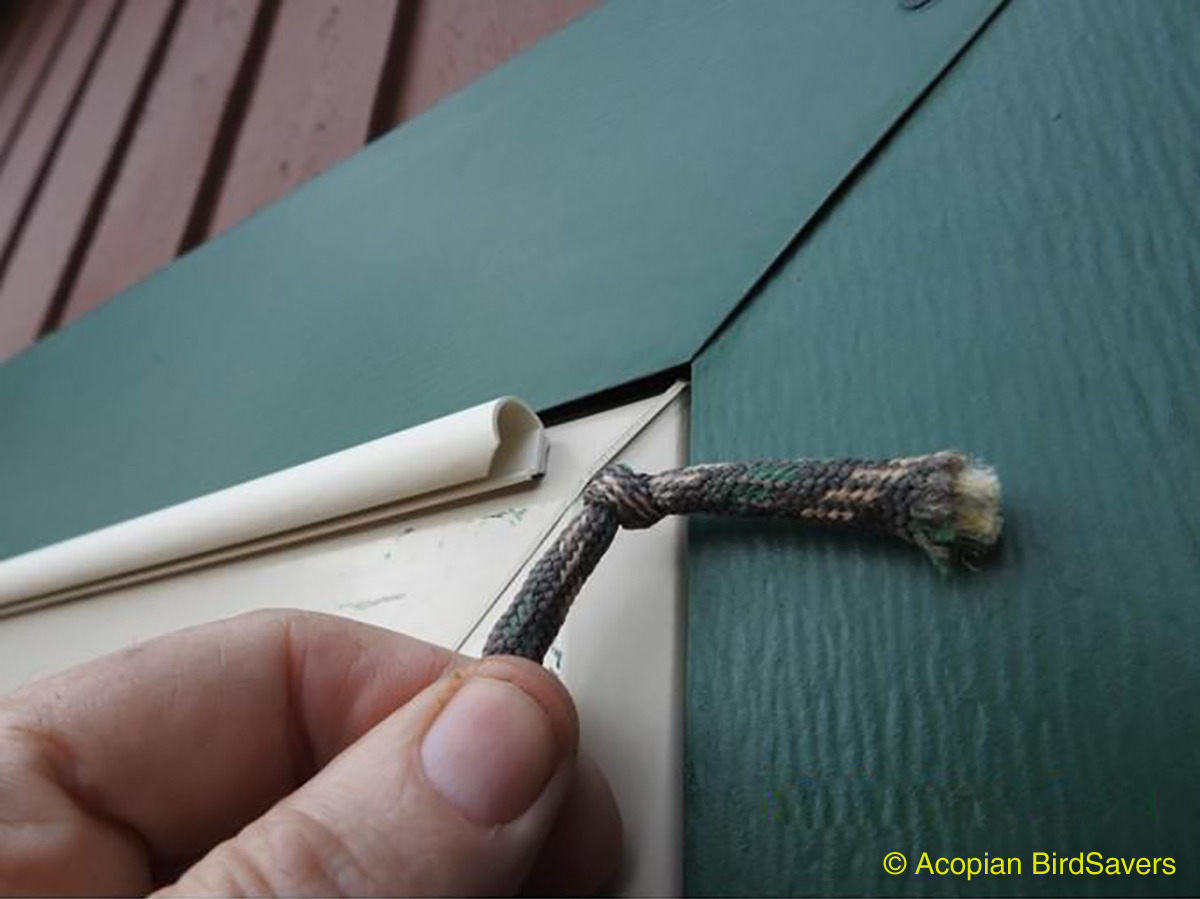
"I used wire channel to hold the paracord for my BirdSavers. So far it works well, but time will tell. You could slightly notch the channel every four inches, so when the cord is slid into the channel, it will fall into the notch and won’t have a tendency to slide around."
- Donald C.
Arlington, WA
Four years later, Donald sent this update: "So far my design has been maintenance free, except after a wind storm the paracord sometimes needs to be repositioned back to four inches. "
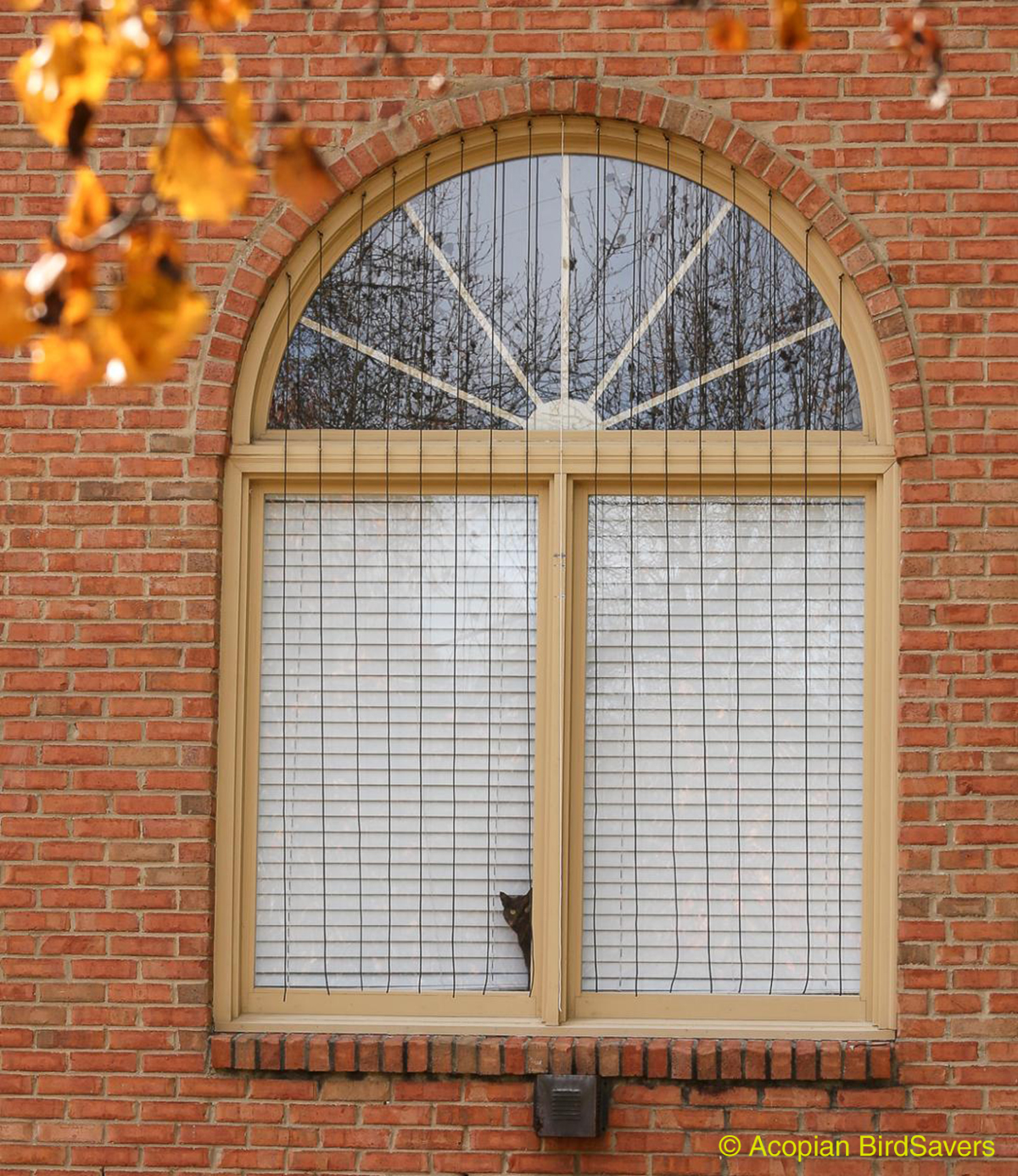
For the BirdSavers on the Arched window above, design/install so that the cords are 4" apart in their final position.
"We put Brass Screw Eyes vertically 4” apart on the arch, and also on the cross-member, and then fed the paracord through both. Feel free to post the picture if you think others would benefit."
- Peter P.
Birmingham, AL

"Thanks for posting your DIY Acopian BirdSavers solution. I installed the paracord 4" apart and found that cord concealers work great at top and bottom and look very professional. The cord concealers I used have a snap on cap to hide all the cord routing. And they already have adhesive."
- Mark H.
Chandler, AZ
Cord concealers apparently come under many different names: Cord Hider, Cord Cover Wall, Wire Covers for Cords, Paintable Cable Concealer, Cable Hider, Wire hiders for TV on Wall, Cable Management Cord Hider Wall, Cable Raceway, White Cord Management.

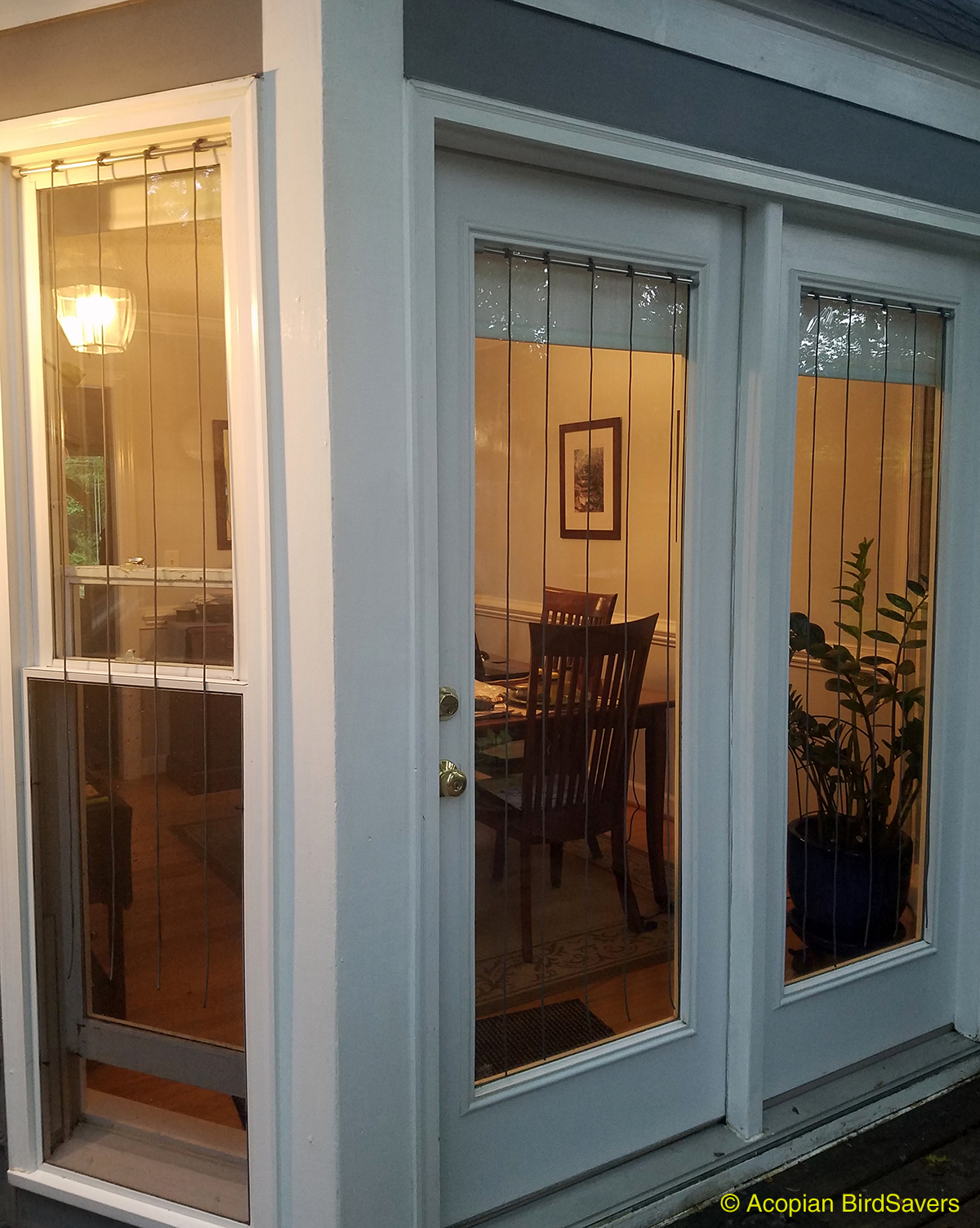
"Thanks for sharing the instructions at BirdSavers.com. We needed a bit of a hack to avoid drilling into a metal door, so we attached each length of cord with a top knot and a slip knot to a tension rod. We probably need to hit the tension rods with some Rust-Oleum but we were too eager to get them up to wait for paint to dry. The rods might not be as secure as something mounted with screws or permanently attached supports, and the cord distance might need adjusting periodically, but the rods are a cinch to pop out for cleaning windows and frame, which is a must in our pretty heavily treed back yard, and we can slip off the cords when we get inspired to treat the rods for rust. We opted for a charcoal grey paracord. Thanks again!"
- Karen F.
Raleigh, NC
Karen sent this update: "Almost 30 months later, we're very pleased and our modifications have held up well. Even though we never applied a protective coating to the (very inexpensive) tension rods, they're in great shape. The rods are perfectly secure, and it has been convenient to be able to remove them temporarily for window cleaning, trim repairs, etc. We haven't really had to adjust the cord distance, even though wrens and nuthatches seem to enjoy climbing the cord. We're also glad we didn't secure the cords at the bottom, as some wind or a good breeze creates a tranquil swaying effect. Of course, the best thing is we haven't had to pick up a stunned (or worse) bird from the deck since we installed the BirdSavers."
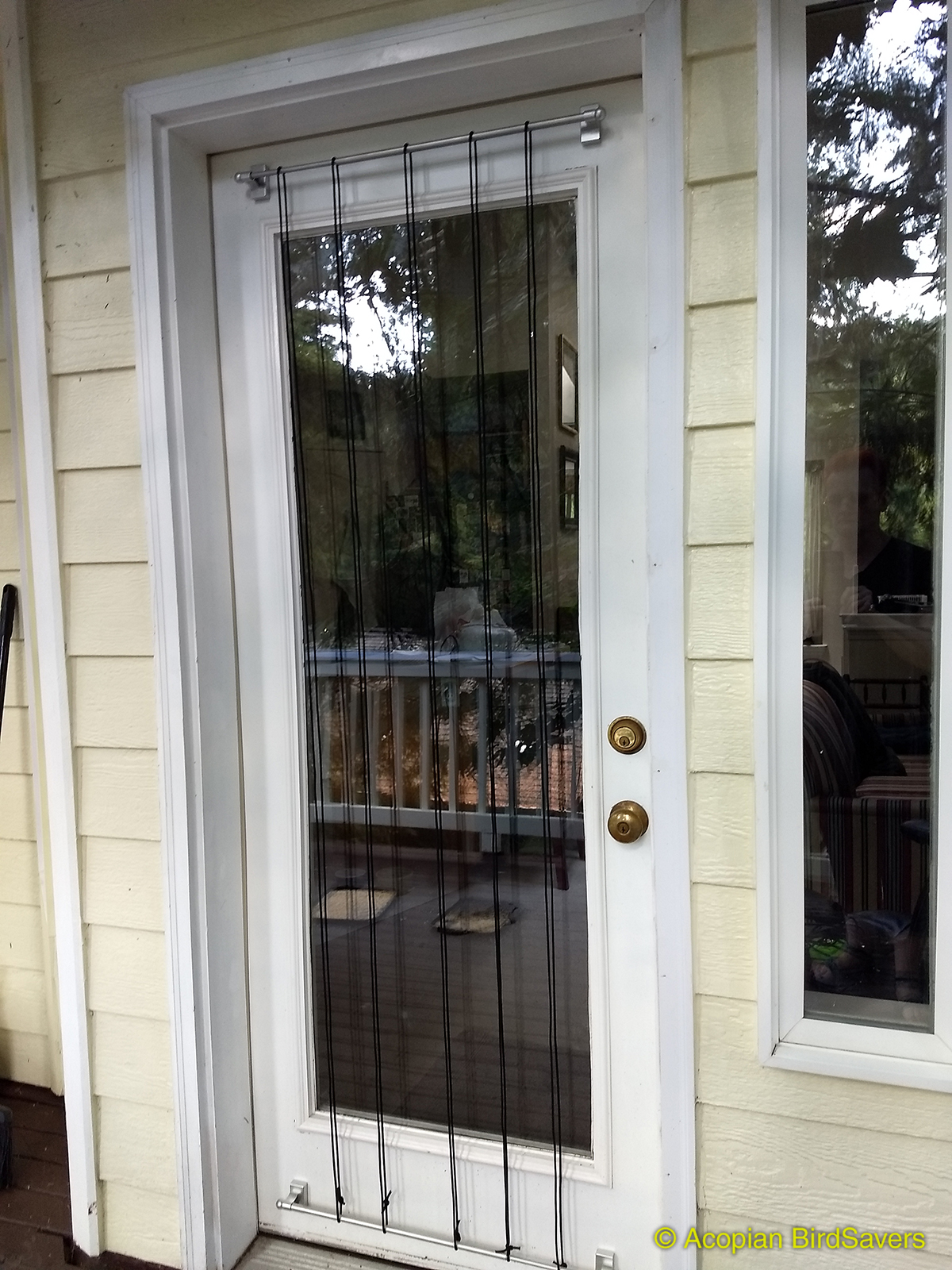
"I made these BirdSavers using a pair of magnetic curtain rods and loops of paracord. I feed band tailed pigeons on my deck, and they were occasionally flying into the door. So far, no bird strikes."
- Kjerstie N.
Bellingham, WA
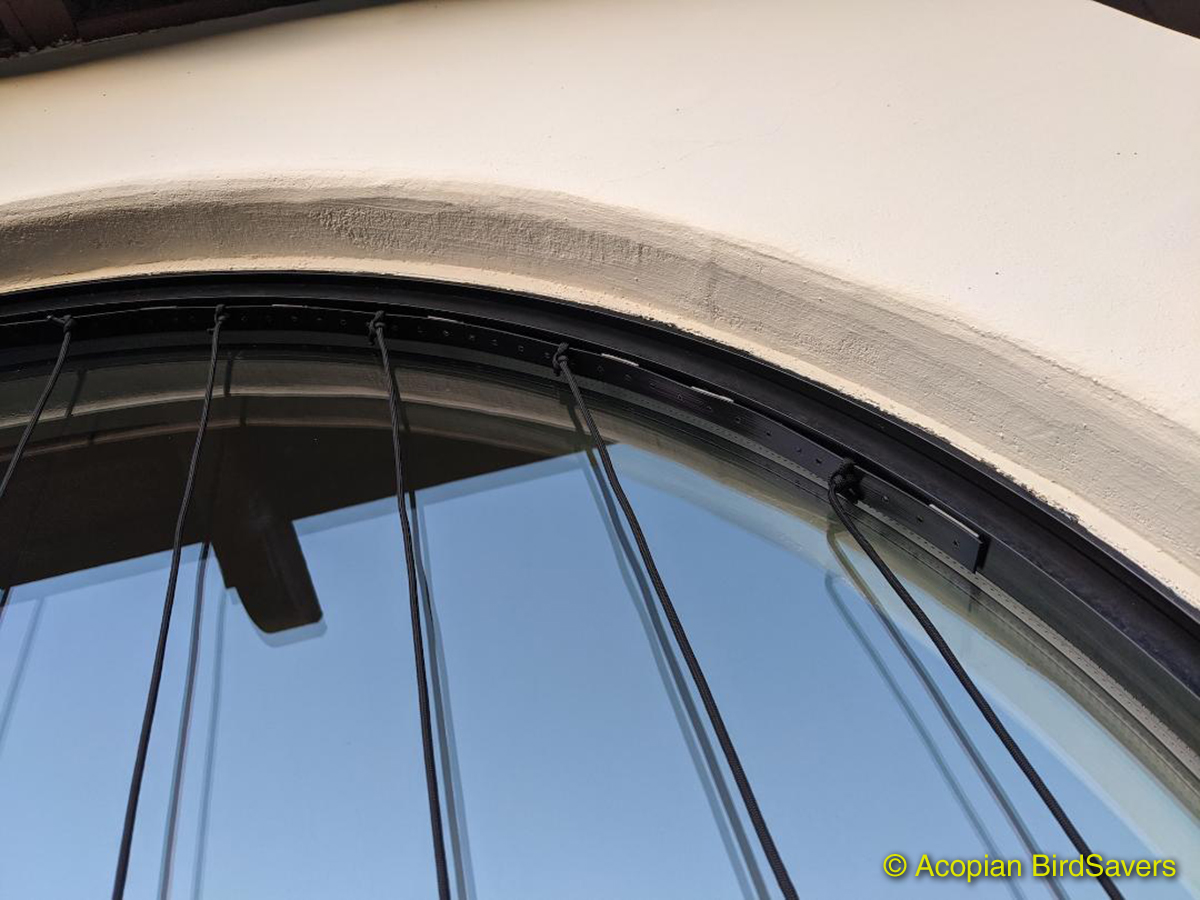

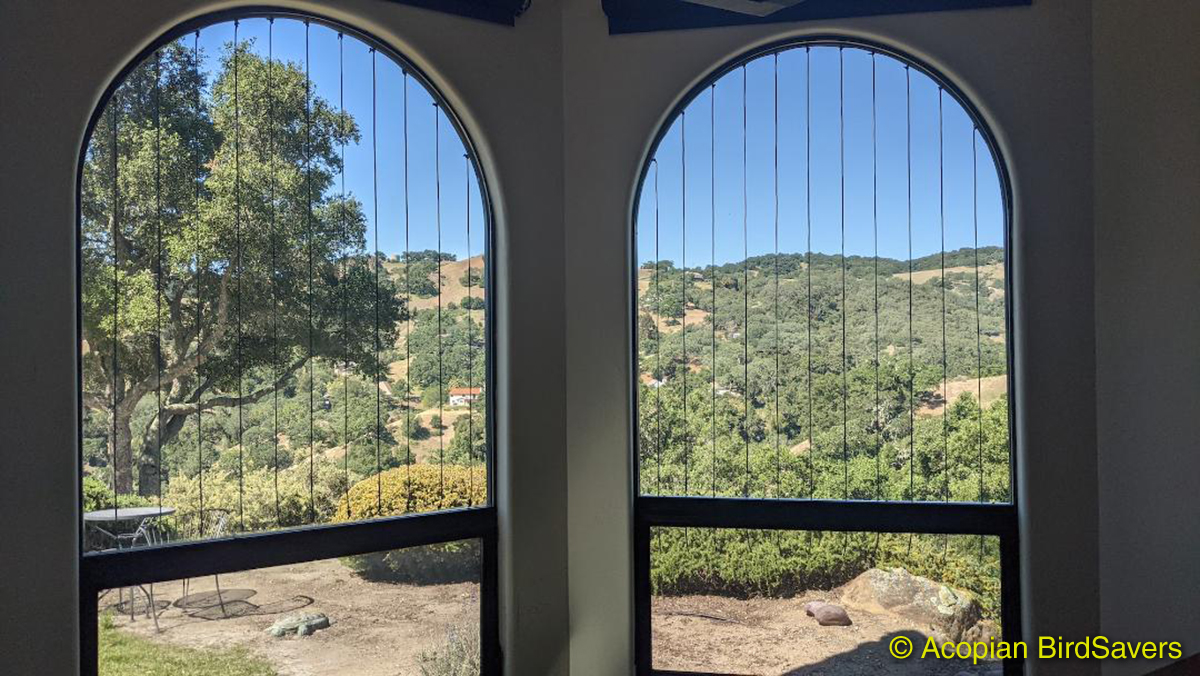
- Jeff Pedigo
Atascadero, CA
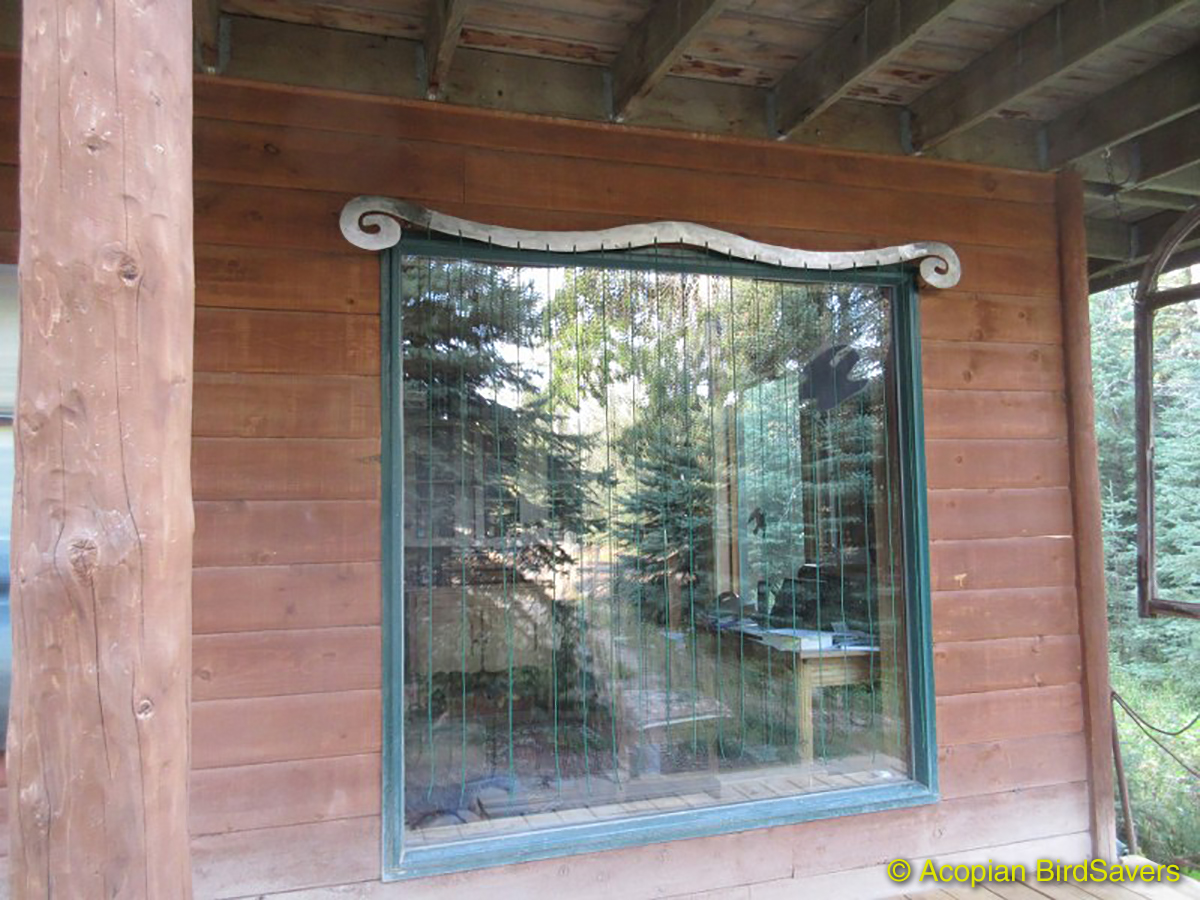

- Janine Falck
Water Valley, Alberta, Canada
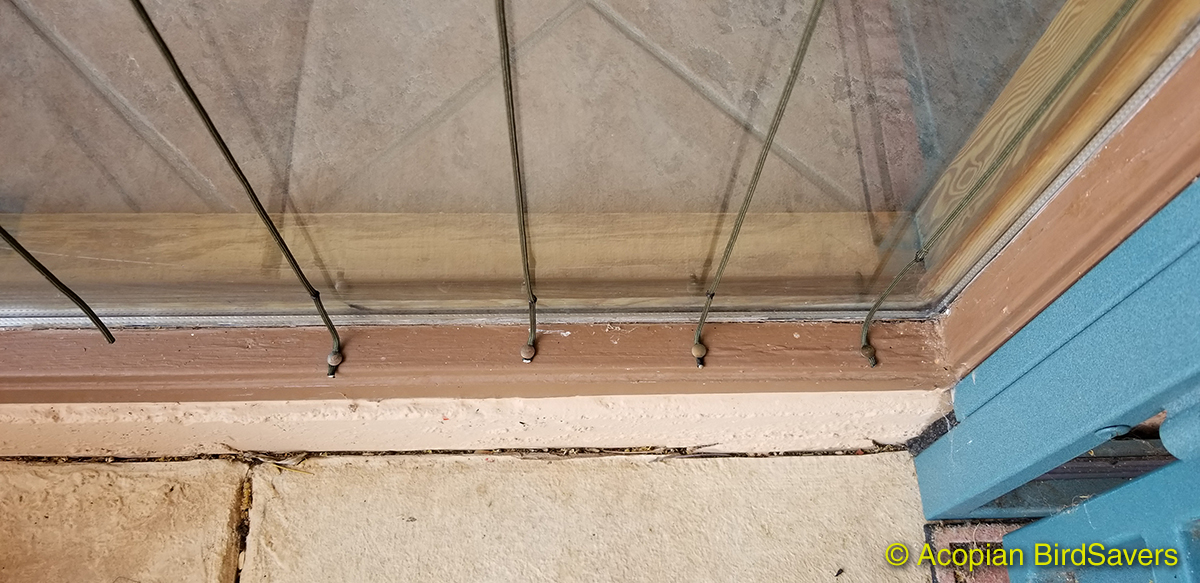
- Heidi J.
Green Valley, AZ
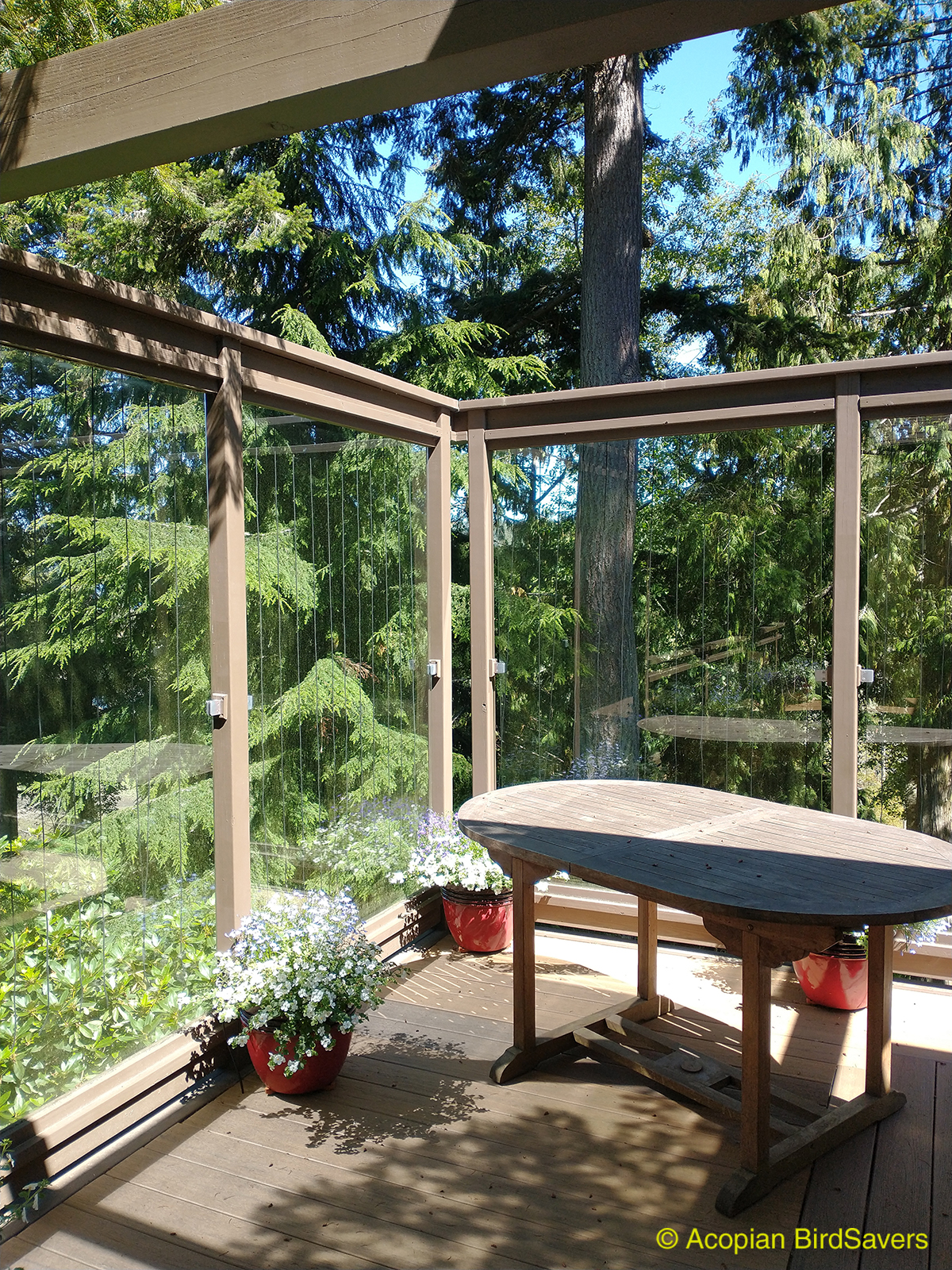
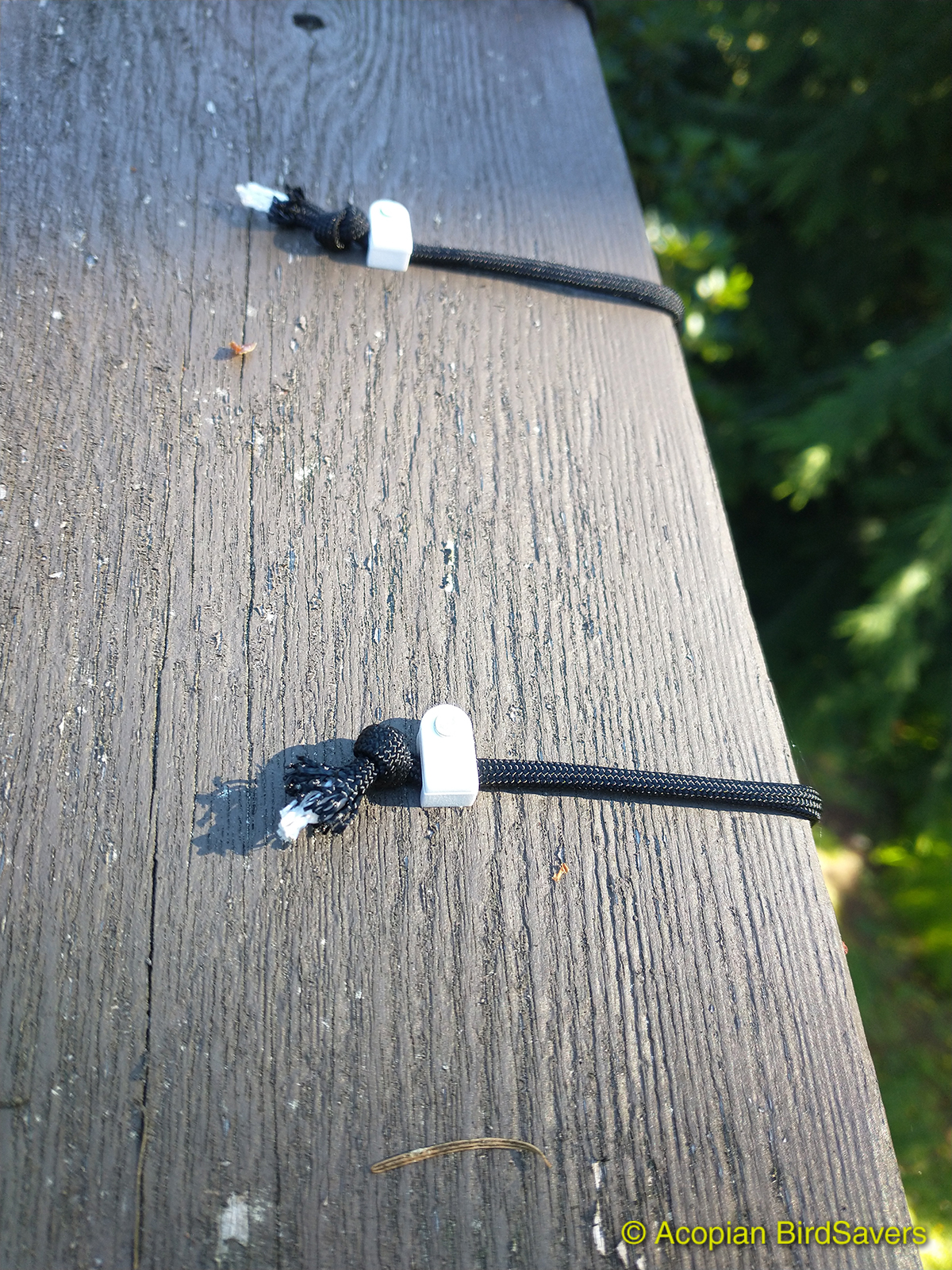
"Thank you so very much for your website birdsavers.com. A few years ago my wife and I bought our house and soon realized that the large glass wind screens on our deck were killing birds. This was obviously unacceptable but I did nothing about it, except hang a plastic owl, since I did not like the “better” options that I found, such as decals. Sadly, just the other week there were two Anna’s hummingbirds laying there. This spurred me into action which resulted in finding your Acopian BirdSavers. Seemed like a perfect solution.
I used black nylon 550-paracord. I attached the cord at 4-inch spacing along the top frame of the panel using 3/16” low volt staples by GardnerBender. The electrical staples, available in any hardware store, were exactly the right size for the 1/8-inch diameter cord. This was a very easy DIY project and it took very little time with the help of my wife and your instructions, of course.
We are pleased with the way the BirdSavers look. They actually improved the appearance of the plain glass panels. Really! The curtains gently sway in the breeze for a nice effect.
Thank you for all your efforts to save the birds!"
- Jerry F.
Port Ludlow, WA
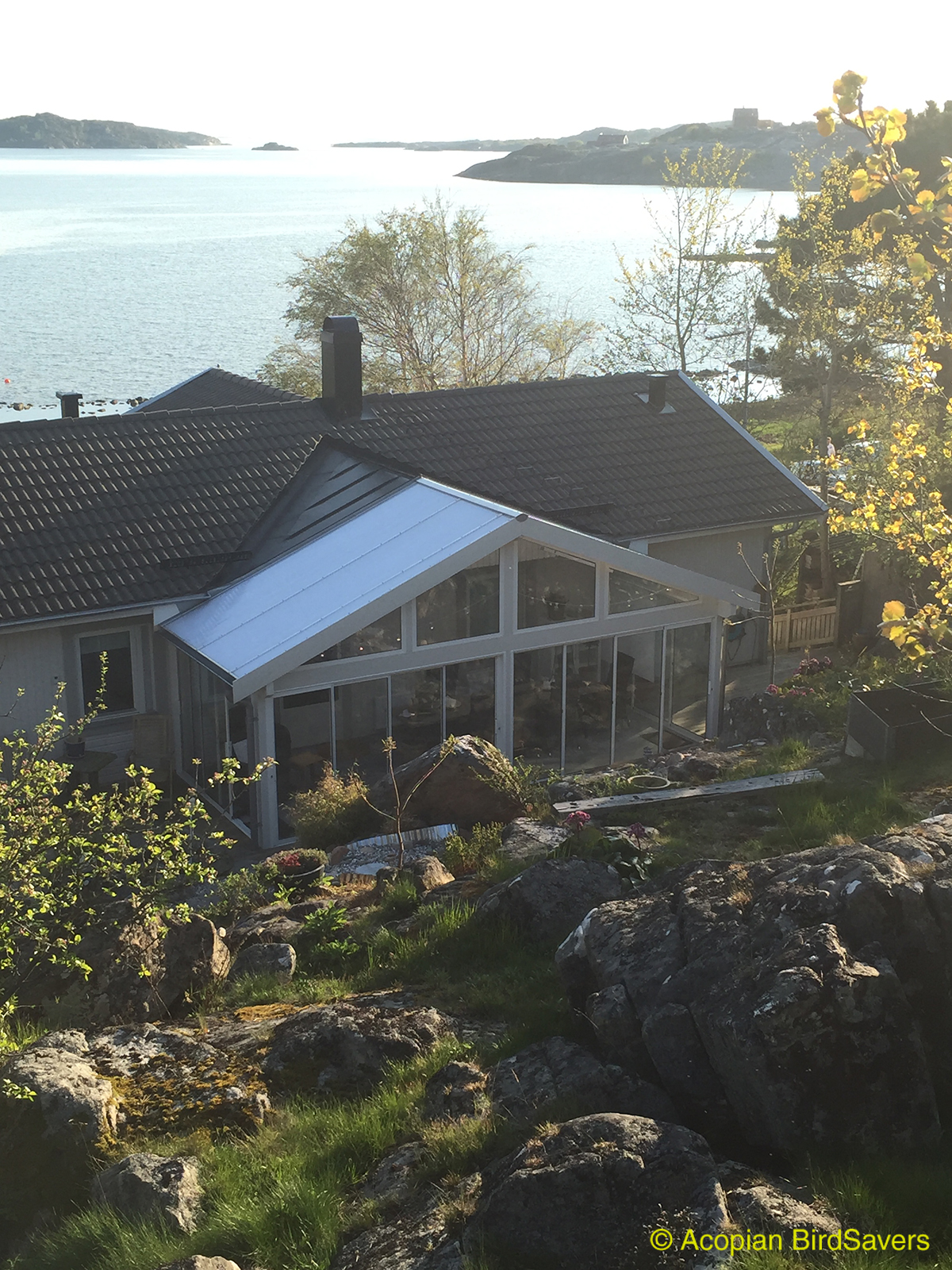


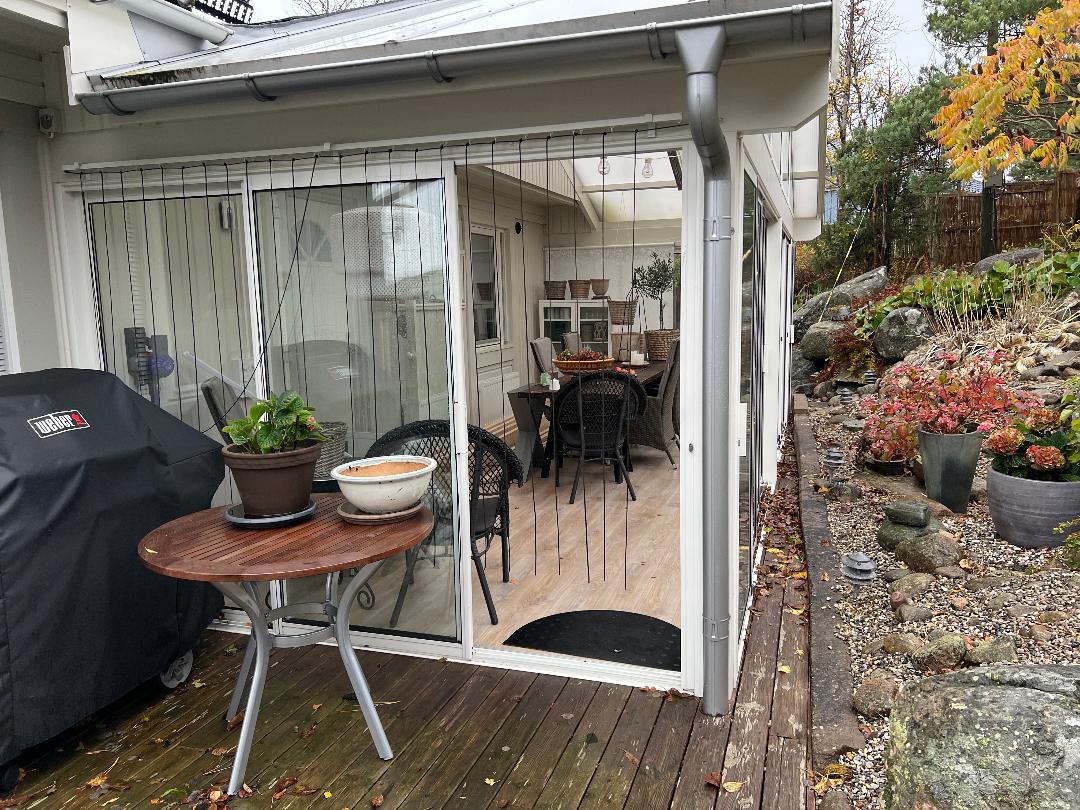 Göran made his BirdSavers five years ago (first three photos). The bottom photo was taken 5 years after the BirdSavers were first made. Notice that the cords are quite a bit shorter that they were when first installed. This is because he didn't do the “Straighten Kinks & Pre-shrink Paracord to Make Acopian BirdSavers” procedure.
Göran made his BirdSavers five years ago (first three photos). The bottom photo was taken 5 years after the BirdSavers were first made. Notice that the cords are quite a bit shorter that they were when first installed. This is because he didn't do the “Straighten Kinks & Pre-shrink Paracord to Make Acopian BirdSavers” procedure.
Something unusual he reports, which is purely anecdotal, is that with the BirdSavers in the open doorway (bottom photo), the number of flies entering the house during the summer is substantially decreased!
- Göran Moberg
Kungälv, Sweden

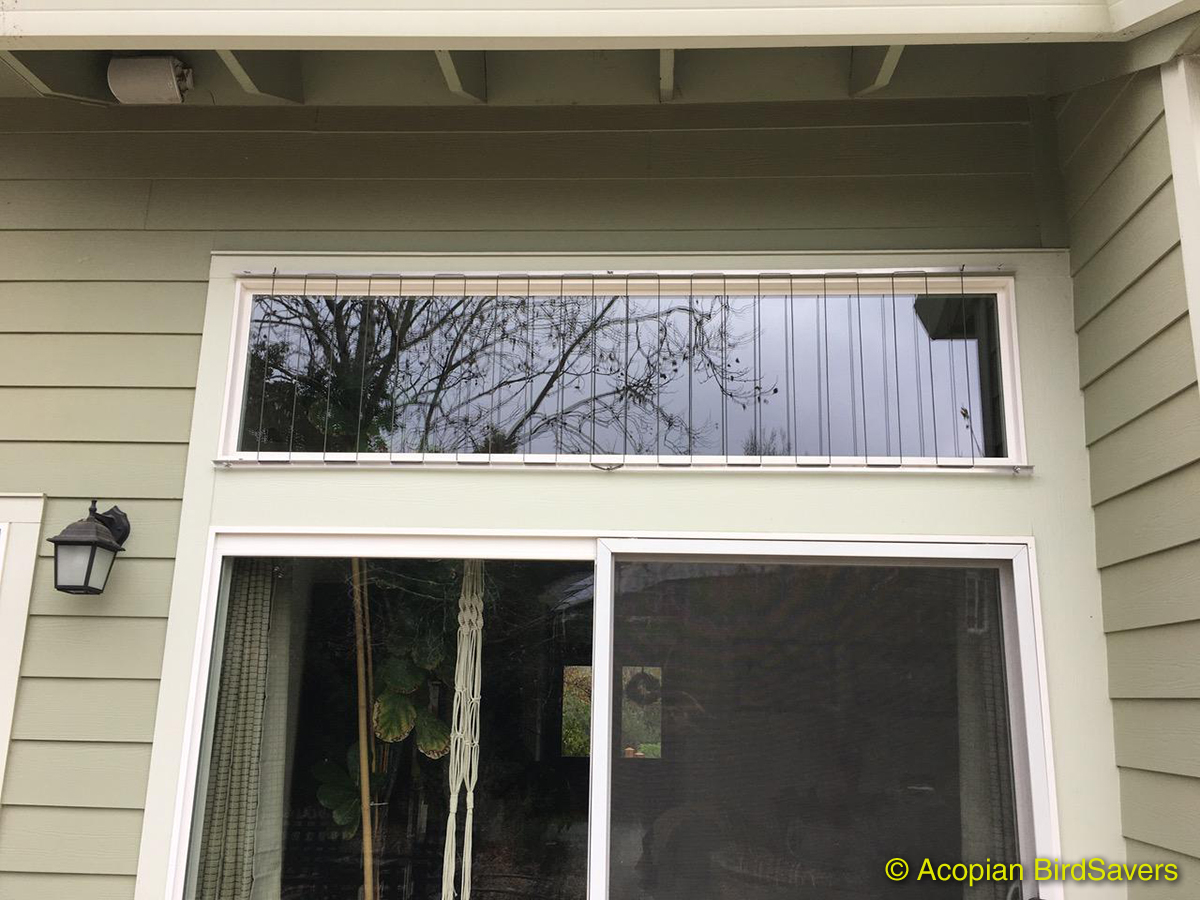
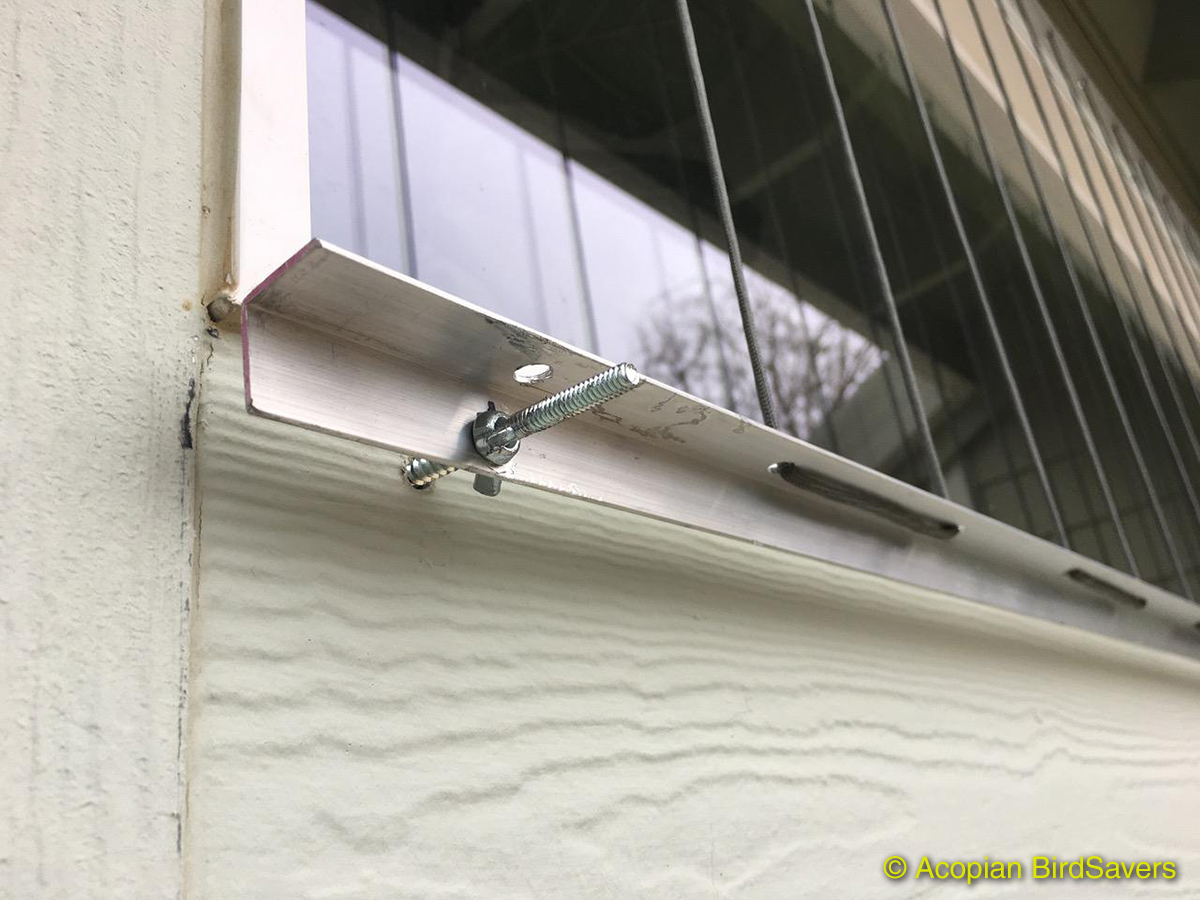
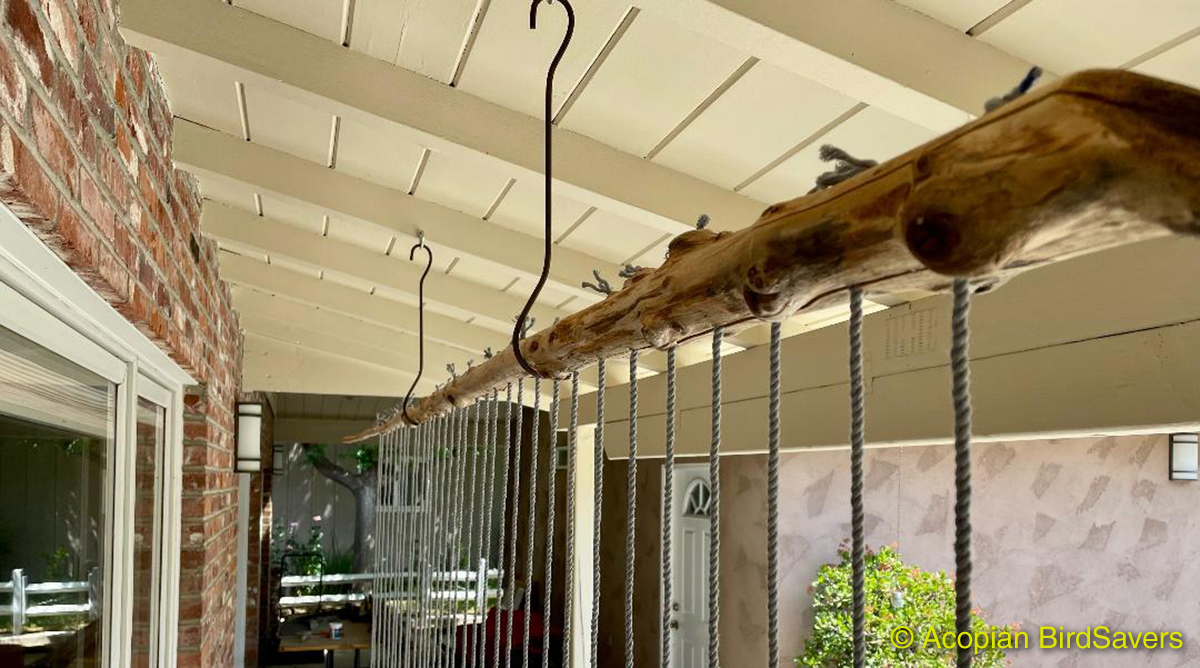

Instead of a J Channel, I used an Undersill Channel. Because it 'turns back on itself', therefore you don't need to tie any knots. The mushrooming from the fire sealing the ends is sufficient. I pencil marked where the cords needed to be, slid them into the Undersill Channel, and a round of hot glue just in case. Done! - F Jerome Bourgeoi
